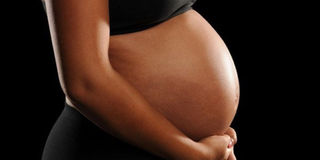Fibroids during pregnancy

What you need to know:
Check-up. Women are advised to go for pre-pregnancy evaluation to identify abnomalies, writes Beatrice Nakibuuka
At 27, Angella Namata conceived her first child. She says her tummy grew bigger each passing day. At two months, she says she felt a lot of pressure on her lower abdomen and cramps that prompted her to see a doctor.
“After an ultra sound scan, the doctor disclosed that I had two fibroids; one was bigger and growing within the uterus and the smaller one was out. I was given medication to reduce the crampy symptoms but upon assessment a month later, the fibroid in the uterus increased in size,” she recalls.
Namata says she bled heavily during the fourth month and lost her baby. The gynaecologist recommended an operation to enable her to conceive again. After the surgery, Namata felt better and successfully conceived six months later.
From her experience, Namata advises women to go for a pre-pregnancy evaluation to identify abnomalies that might hinder the process of conception or even pregnancy.
What are they?
Fibroids are non-cancerous muscle tumours that develop in or around the uterus. Uterine fibroids may appear on the outside covering of the womb (sub-serosal), in the muscle of the womb (intramural) and inside the inner lining of the womb (submucosal or sub-endometrial).
Fibroids usually do not interfere with getting pregnant but their location and size can distort the womb which may affect fertility or if someone conceives, she may get complications leading to pregnancy loss, according to Dr Junior Ndozire, a gynaecologist at Mildmay Uganda.
He says: “It is possible to carry a pregnancy to term with fibroids, but it depends on where they are located. However, sometimes fibroids can cause pain during pregnancy and complications are likely to occur as they grow bigger during the process. Some of the fibroids shrink during pregnancy while others remain unchanged.”
According to Dr Ndozire, there is no known cause for uterine fibroids, but genetic factors are thought to play a big role. The presence of the hormones- estrogen and progesterone also contribute to the growth of fibroids. Such uterine fibroids are hormone driven and are likely to shrink after menopause.
He says: “Nutrition may also cause fribroids. Red meat are associated with fibroid growth; being obese is associated with growth of fibroids; African women are at an increased risk of developing fibroids than their white counterparts as well as genetics.”
Symptoms
According to Dr Charles Kiggundu, a gynaecologist at Kawempe General Hospital, fibroids can be felt during a pelvic examination but can only be confirmed by an ultra sound scan. The commonest symptoms of fibroids include; prolonged heavy and painful periods, bleeding between periods, pressure in your lower abdomen, pain during sex, difficulty emptying your bladder, low back pain, constipation reproductive issues, including infertility, miscarriage and preterm labour.
Effects of fibroids
During pregnancy, fibroids can cause complications such as bleeding, uterine pain, reduced growth of the foetus, premature delivery or miscarriages. This happens if they are in the space where the baby sits.
Dr Ndozire reveals that fibroids can also cause the placenta to implant in the lower part of the uterus, because there is no space or even the placenta peeling off the uterus. This reduces the supply of oxygen to the foetus, thereby increasing the risk for a premature birth.
He says: “Fibroids have the potential to prevent full growth of the foetus. It also changes the position of the baby in the womb or obstruct the path of delivery.”
For babies
The treatment approach for fibroids depends on their size, fertility, age of the woman as well as the symptoms and effects they are likely to cause to the person. Dr Kiggundu cautions women against self-medication saying painkillers such as Ibuprofen may cause miscarriages, especially if they are administered in the first and last three months of pregnancy. He says: “Treatment options for fibroids during pregnancy are limited because of the risk of hurting the foetus. Gynaecologists may recommend bed rest, hydration as well as prescribing mild pain relievers to manage the symptoms.”all fibroids require surgery. “Unless one has complications or the fibroids compromise the general health of a person, they can always be left to shrink on their own or treated using other options.” He adds that: “Uterine fibroid embolism –a procedure that blocks the blood flow to the fibroids can also treat the symptoms of fibroids without surgery. This reduces the size of the fibroid and deals with the symptoms.” Women who have fibroids are advised to conceive.




